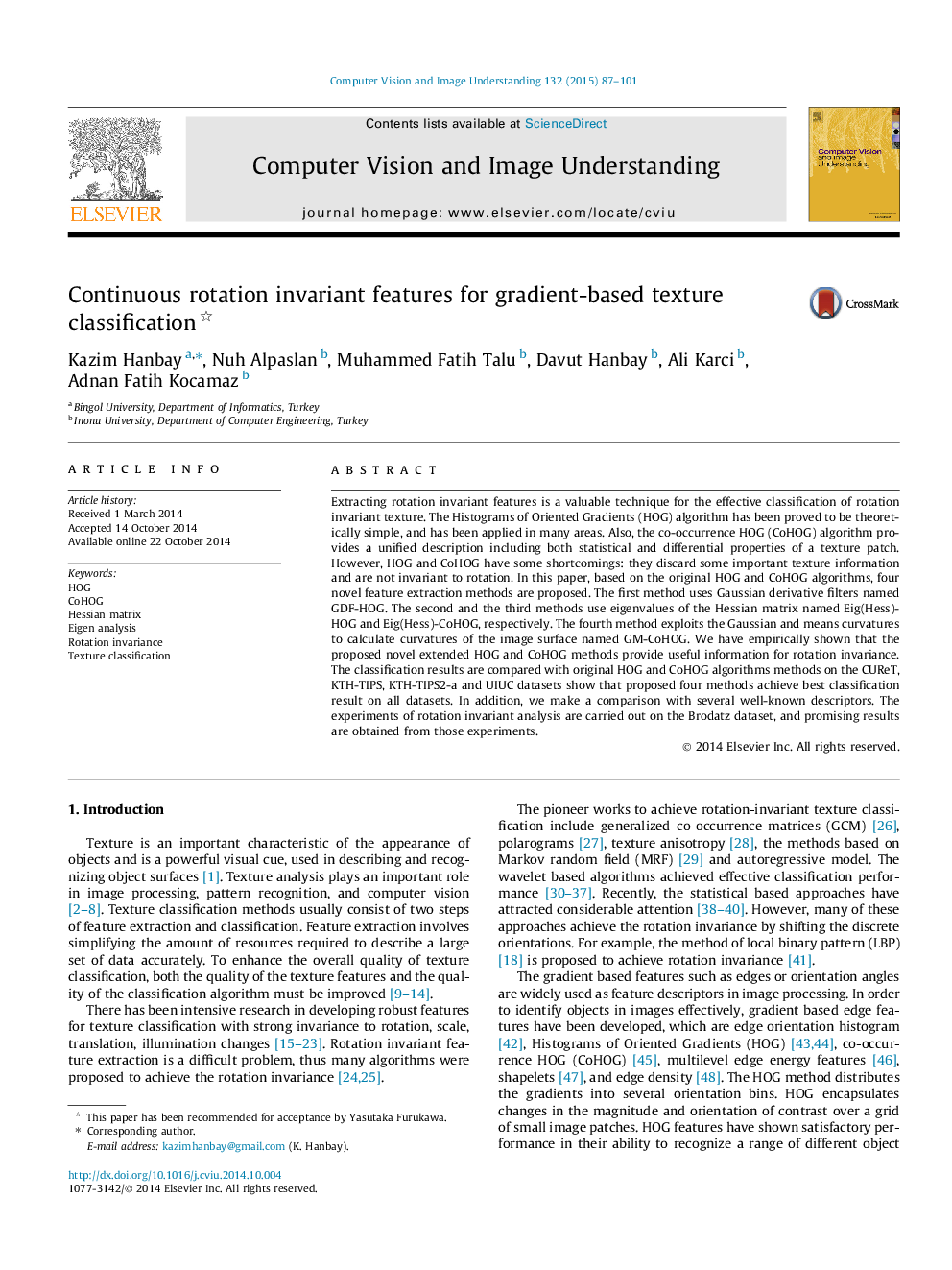| Article ID | Journal | Published Year | Pages | File Type |
|---|---|---|---|---|
| 527491 | Computer Vision and Image Understanding | 2015 | 15 Pages |
•Four highly discriminative and continuous rotation invariant methods are proposed.•We use the Hessian matrix and Gaussian derivative filters.•Verified on the CUReT, KTH-TIPS, KTH-TIPS2-a, UIUC and Brodatz texture datasets.
Extracting rotation invariant features is a valuable technique for the effective classification of rotation invariant texture. The Histograms of Oriented Gradients (HOG) algorithm has been proved to be theoretically simple, and has been applied in many areas. Also, the co-occurrence HOG (CoHOG) algorithm provides a unified description including both statistical and differential properties of a texture patch. However, HOG and CoHOG have some shortcomings: they discard some important texture information and are not invariant to rotation. In this paper, based on the original HOG and CoHOG algorithms, four novel feature extraction methods are proposed. The first method uses Gaussian derivative filters named GDF-HOG. The second and the third methods use eigenvalues of the Hessian matrix named Eig(Hess)-HOG and Eig(Hess)-CoHOG, respectively. The fourth method exploits the Gaussian and means curvatures to calculate curvatures of the image surface named GM-CoHOG. We have empirically shown that the proposed novel extended HOG and CoHOG methods provide useful information for rotation invariance. The classification results are compared with original HOG and CoHOG algorithms methods on the CUReT, KTH-TIPS, KTH-TIPS2-a and UIUC datasets show that proposed four methods achieve best classification result on all datasets. In addition, we make a comparison with several well-known descriptors. The experiments of rotation invariant analysis are carried out on the Brodatz dataset, and promising results are obtained from those experiments.
